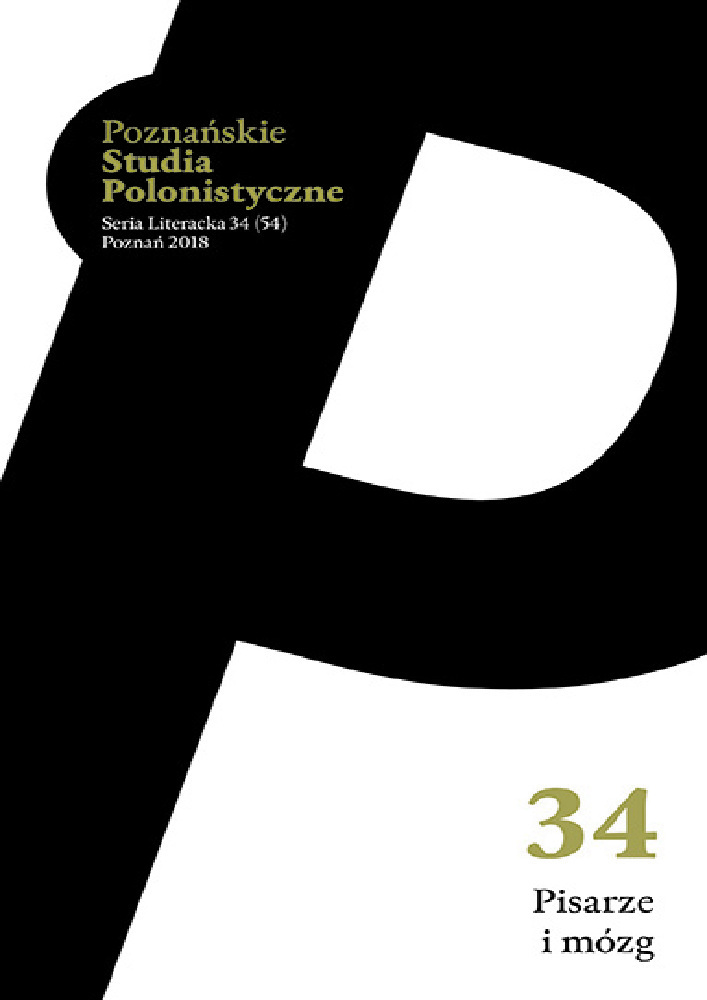Abstrakt
The article presents the character of the zombie popular in the contemporary audio-visual culture by placing it in the context of post humanist paradigm. He concentrates on the brain symbolism representative for the character, which, in the classical understanding of the living dead, due to dissimilar functioning, makes it different from humans and their brain-like traits: the mind and heart. Analysing the recent films such as Warm Bodies and The Girl with All the Gifts, he demonstrates the present inadequacy of such a division. Unlike the classical Night of the Living Dead, they are in line with post anthropocentric and new materialism philosophy, by differently symbolically depicting the role and place of the human in the world. It is presently tantamount to the place of non-humans: animals, objects, artefacts and monsters including the living dead. The change of the cultural and film paradigm observed in zombie horrors indicates a deeper strategy of authors of those popular films.Bibliografia
Bakke Monika (2015), Bio-transfiguracje. Sztuka i estetyka posthumanizmu, Wydawnictwo Naukowe UAM, Poznań.
Bocian Katarzyna (2009), Odmienne stany świadomości. Antropologia ciała w polskiej literaturze fantastyczno-naukowej (1989-2005), Collegium Columbinum, Kraków.
Braidotti Rosi (2014), Po człowieku, przeł. Joanna Bednarek, Agnieszka Kowalczyk, Wydawnictwo Naukowe PWN, Warszawa.
Brzostek Dariusz (2009), Literatura i nierozum. Antropologia fantastyki grozy, Wydawnictwo Naukowe UMK, Toruń.
Domańska Ewa (2017), Nekros. Wprowadzenie do ontologii martwego ciała, Wydawnictwo Naukowe PWN, Warszawa.
Kołodyński Andrzej (1986), Seans z wampirem, Wydawnictwa Artystyczne i Filmowe, Warszawa.
Konefał Sebastian Jakub (2008), Ciało i lęk. Fizjologia śmierci w zombie horrorze oraz kulturze audiowizualnej, „Kwartalnik Filmowy”, nr 61, s. 20-39.
Marcela Mikołaj (2015), Monstruarium nowoczesne, Wydawnictwo Uniwersytetu Śląskiego, Katowice.
Wichowicz Amelia (2016), Zombie po ludzku, „Ekrany”, nr 1 (29), s. 24-28.
Wieczorkiewicz Anna (2009), Mostruarium, Wydawnictwo słowo/obraz terytoria, Gdańsk.
Licencja
Autorzy
Autorzy tekstów przyjętych do publikacji w czasopiśmie „Poznańskie Studia Polonistyczne. Seria Literacka” są zobowiązani do wypełnienia, podpisania i odesłania na adres redakcji umowy o udzielenie nieodpłatnej licencji do utworów, z zobowiązaniem do udzielania sublicencji CC.
Zgodnie z umową, autorzy tekstów opublikowanych w czasopiśmie „Poznańskie Studia Polonistyczne. Seria Literacka” udzielają Uniwersytetowi im. Adama Mickiewicza w Poznaniu niewyłącznej i nieodpłatnej licencji oraz zezwalają na użycie sublicencji Creative Commons Attribution-NoDerivatives 4.0 International (CC BY-ND 4.0).
Autorzy zachowują prawa do dalszego, swobodnego rozporządzania utworem.
Użytkownicy
Zainteresowani użytkownicy internetu uprawnieni są do korzystania z utworów opublikowanych od 2016 roku w „Poznańskich Studiach Polonistycznych. Serii Literackiej” pod następującymi warunkami:
- uznanie autorstwa – obowiązek podania wraz z rozpowszechnionym utworem, informacji, o autorstwie, tytule, źródle (odnośniki do oryginalnego utworu, DOI) oraz samej licencji;
- bez tworzenia utworów zależnych – utwór musi być zachowany w oryginalnej postaci, nie można bez zgody twórcy rozpowszechniać np. tłumaczeń, opracowań.
Do wszystkich tekstów opublikowanych przed 2016 r. prawa autorskie są zastrzeżone.
Inne
Uniwersytet im. Adama Mickiewicza w Poznaniu zachowuje prawo do czasopisma jako całości (układ, forma graficzna, tytuł, projekt okładki, logo itp.).
